Plantation cooks belonged to a special tribe, now almost extinct. Eccentric, temperamental, usually drunk on arrack on market days, they had a distressing tendency to kill off assorted relatives anytime they wanted a few days leave. But they were immensely gifted, capable of producing superb meals in badly equipped, smoky kitchens, and serving them with a flourish at the best-appointed tables. The procession of Josephs, Anthonys and Chinnaswamys attached to the tea and coffee plantation bungalows bore a strong resemblance to the mythical ‘Ramaswamy’ immortalized in Colonel Kenny-Herbert’s Culinary Jottings for Madras, published in 1885. He had to be wooed, coaxed and cajoled into displaying his mastery over refined Western and Indian cooking. He was an artist, who could create a “petit pâte a la financière” or a “supreme de la volaille” in the most basic kitchen. But, as Kenny-Herbert cautioned, “if you want to put nice little dinners on your table, you must be prepared to make a friend of your chef.” The relationship was a delicately balanced one, which needed patience and, as Kenny-Herbert put it, a smile when referring to past culinary disasters.
In his frugally equipped, wood-fired kitchen, Chinnaswamy wielded his genius, turning out spun sugar baskets filled with fresh fruit and cream, and local curries with equal felicity. He managed all this with the bare minimum of kitchen equipment and the simplest utensils. Kenny- Herbert, however, sensibly recommended, that it would be best to “ give him a few crockery sundries for exclusive use in his kitchen. If not, portions of your breakfast and dinner sets will find their way to the cook room, and the list of the killed, wounded and missing will become alarming.” Chinnaswamy and his tribe shopped for household provisions at the weekly market and somehow always managed to exceed their allowance. A review of the accounts always led to much unhappiness all around, with Chinnaswamy pleading his innocence, leaving the master and mistress ofthe house exasperated, but unable to sack him, as they were hopelessly attached to his excellent curries. Here’s Cathleen Ballantyne, who came to Coorg in the 1880’s as a coffee planter’s wife, describing her husband, George Ballantyne, trying to reconcile the weekly accounts with Chinnaswamy:
“ Now, here are coriander seeds and coconuts”.
“ For curry sar,” said Chinnaswamy.
“ And turmeric and poppy seeds?”
“ For curry sar.”
“ And chillies and dry ginger, and cardamoms?”
“ For curry sar,” again came the reply.
“ By Jove.” George said, clearly impressed.
Meanwhile, in the kitchen, he teased out the qualities of each ingredient for a curry on a granite grinding stone, or in a mortar and pestle. If asked for a recipe, he became, invariably, aloof and evasive, his eyes sliding away to the distant hills visible through the window. He roasted and combined spices to perfection, displaying a genius for creating his own special spice pastes and blends, which left his own distinctive stamp on curries that held his employers in their thrall forever, making sure that he ruled the kitchen.
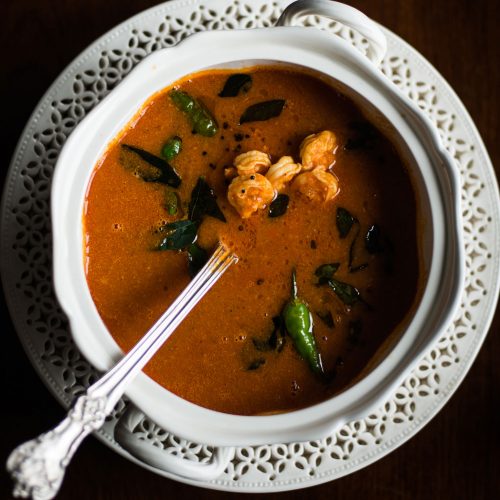
Sunday Prawn Curry
Equipment
- Pan or Khadai
Ingredients
- 500 grams Curry Prawns Shelled and de-veined
- 6 Large Tomatoes Peeled and chopped fine, or pureed in a blender
- 2 Large Onions Chopped fine
- 2 tbsp Thick garlic ginger paste
- 2 level tsp Coriander Powder
- 1 level tsp Turmeric Powder
- 1 level tsp Kashmiri Chilli Powder or according to taste
- 2 tsp Bolst’s Hot Curry Powder
- 2 tsp Sugar
- Salt to taste
- 4-5 tbsp Vegetable Oil
- 1 ½ Cup Hot Water
For the seasoning
- 8-10 Curry leaves
- 1 tsp Mustard leaves
- ¼ tsp Scant Fenugreek Seeds
- 3-4 Whole green chillies Slit lengthwise
Instructions
- Peel and de-vein the prawns. Wash and pat dry. Mix in the turmeric and set aside.
- Heat the oil in a pan or khadai. Add the chopped onions, and fry on a slow flame, stirring often, until just browned.
- Add the garlic and ginger paste, and cook until the raw smell disappears.
- Add the coriander powder, stir for a minute, then add the Kashmiri chili powder, and stir a few times, mixing well.
- Sprinkle the Bolst’s curry powder, and stir well, taking care not to let the spices burn.
- Pour in the pureed tomatoes, and stirring, cook on a low flame until all the spices are well blended with the tomato paste, which should have a sauce-like consistency.
- Add the hot water, and bring to the boil. Add salt to taste, and the sugar.
- When the gravy thickens just a little, add the prawns, give the curry a quick boil, and remove from the flame before the prawns overcook.
- To season, heat 1 tbsp oil in a small pan. When hot, add the mustard seeds. When they splutter, add curry leaves, , fenugreek seeds and whole slit green chillies. Pour the contents of the pan over the prawn curry, and serve with steamed rice.
Notes

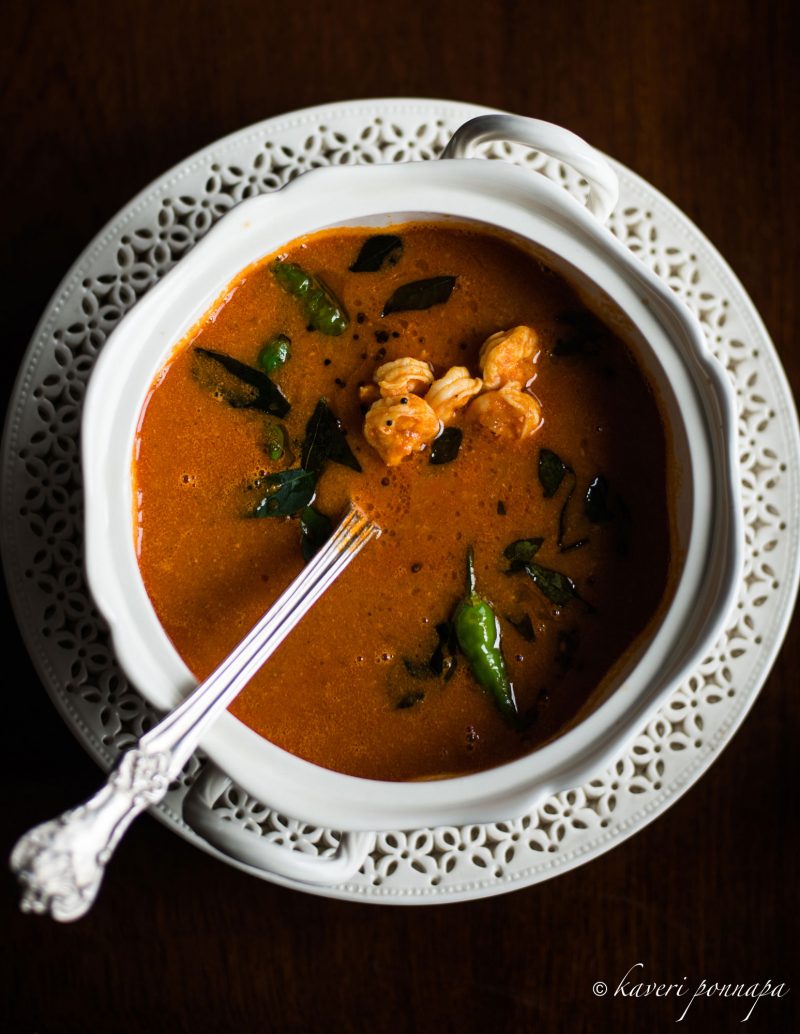
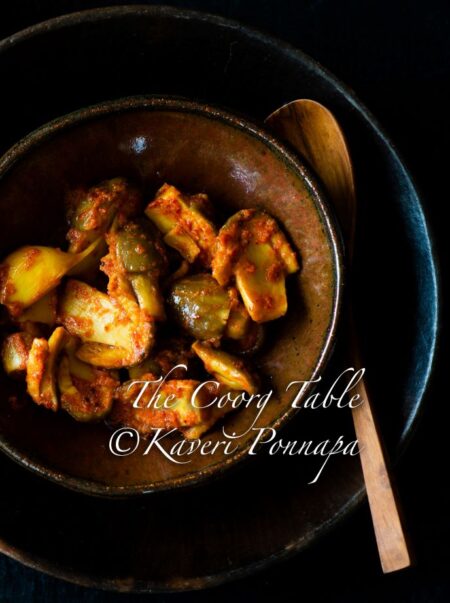
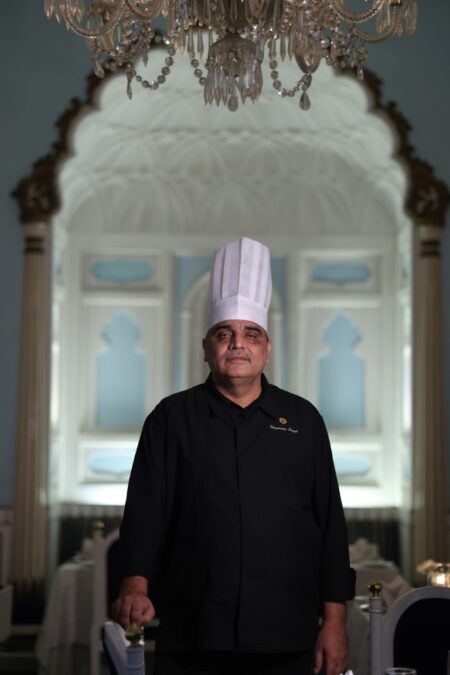
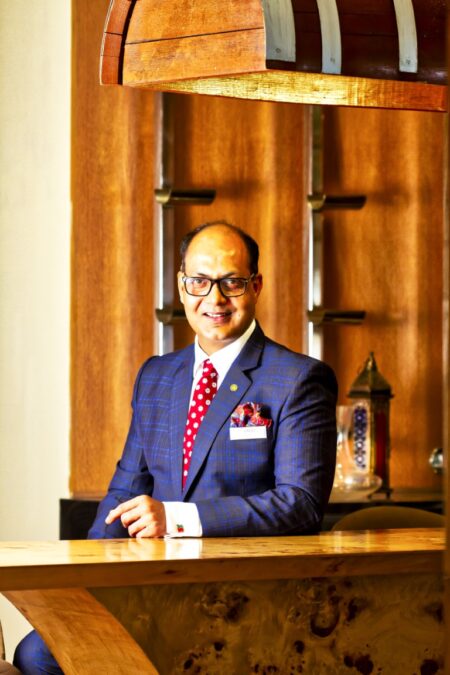
Would you by any chance know how to make Bolts curry powder.
Hi Geetha, you can buy Bolst’s curry powder on Amazon. It’s very good, and made to an old family recipe. Kaveri